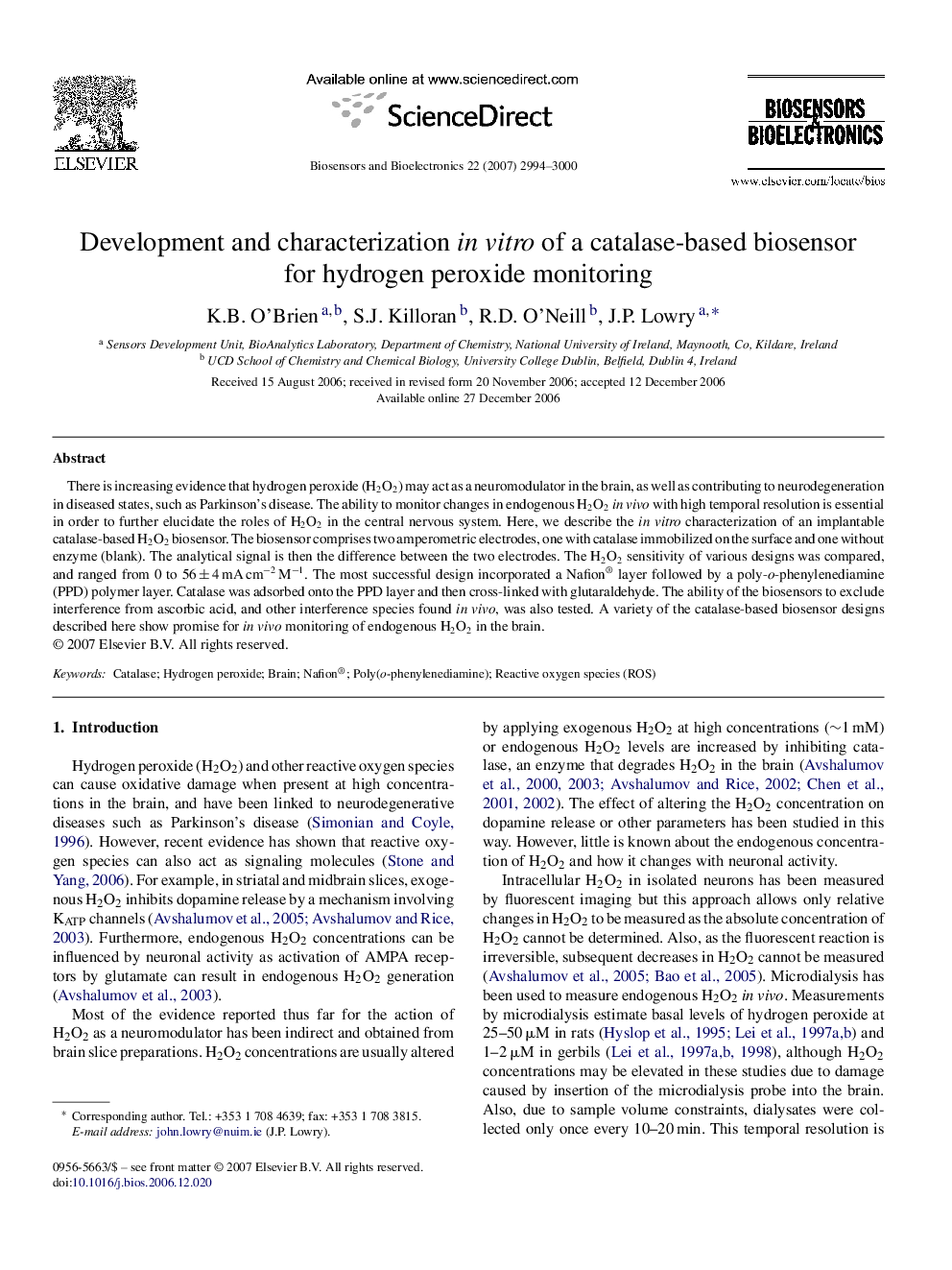| Article ID | Journal | Published Year | Pages | File Type |
|---|---|---|---|---|
| 869424 | Biosensors and Bioelectronics | 2007 | 7 Pages |
There is increasing evidence that hydrogen peroxide (H2O2) may act as a neuromodulator in the brain, as well as contributing to neurodegeneration in diseased states, such as Parkinson's disease. The ability to monitor changes in endogenous H2O2in vivo with high temporal resolution is essential in order to further elucidate the roles of H2O2 in the central nervous system. Here, we describe the in vitro characterization of an implantable catalase-based H2O2 biosensor. The biosensor comprises two amperometric electrodes, one with catalase immobilized on the surface and one without enzyme (blank). The analytical signal is then the difference between the two electrodes. The H2O2 sensitivity of various designs was compared, and ranged from 0 to 56 ± 4 mA cm−2 M−1. The most successful design incorporated a Nafion® layer followed by a poly-o-phenylenediamine (PPD) polymer layer. Catalase was adsorbed onto the PPD layer and then cross-linked with glutaraldehyde. The ability of the biosensors to exclude interference from ascorbic acid, and other interference species found in vivo, was also tested. A variety of the catalase-based biosensor designs described here show promise for invivo monitoring of endogenous H2O2 in the brain.
